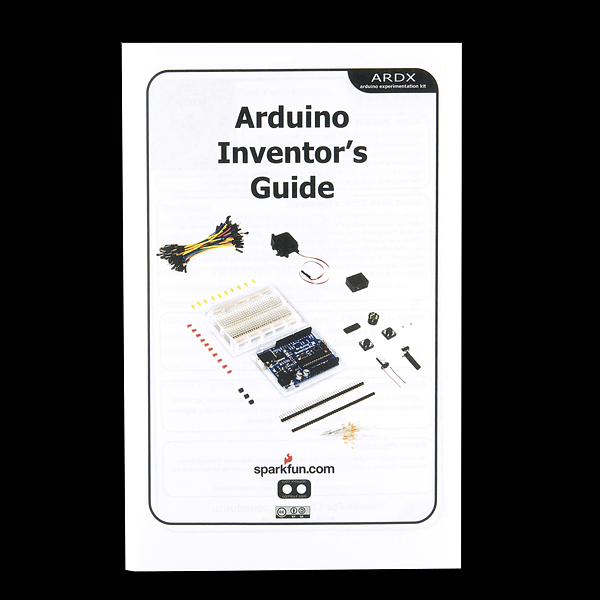SparkFun Inventor's Kit Manual
**Replacement: **None. We are not currently selling the manual separately. But you can download and print it yourself. Check out the newest SIK. This page is for reference only.
This is a 36 page full color printed manual. We teamed up with Oomlout to describe the building of 12 circuits using the Arduino and the parts from the SparkFun Inventor's Kit (formally known as the Arduino Inventor's Kit). We figured you might want the printed booklet by itself if you already had most of the parts. Professionally printed, folded, and stapled binding. We think it's pretty fancy.
This is the manual only. It does not include the breadboard overlays.
You can print your own! The PDFs are below. But if you want to skip the hassle, here 'tis.
Documentation:
- Web quality guide (1MB)
- Print quality guide (8MB)
Comments
Looking for answers to technical questions?
We welcome your comments and suggestions below. However, if you are looking for solutions to technical questions please see our Technical Assistance page.
Customer Reviews
No reviews yet.


This got me started with electronics, I love it!
I can't find the print version, 404.
In fact there is no print version in here http://www.sparkfun.com/tutorial/AIK/ :-(
Should be fixed now.
Errata; on page 26, CIRC-10... mentions the LM335A temp chip... correct version is on: http://www.oomlout.com/a/products/ardx/circ-10
The AIK ships with the LM335A temperature sensor, not the TMP36. Good eyes! The AIK manual is correct. We are fixing the overlay. Oomlout uses the TMP36 in their kit.
Please keep looking for errors! We'll fix them as quickly as possible.
Not only are the wiring diagrams for the LM335A and TMP36 completely different, so is the formula used to determine temperature for each device. If you download the code for Circuit 10 from the ardx.org site, you will need to modify it to work with the LM335A. The TPM36 puts out .5V at 0C whereas the LM335A puts out 2.7315V at 0C. So you need to change this line:
temperature = (temperature ? .5) * 100;
to
temperature = (temperature ? 2.7315) * 100;